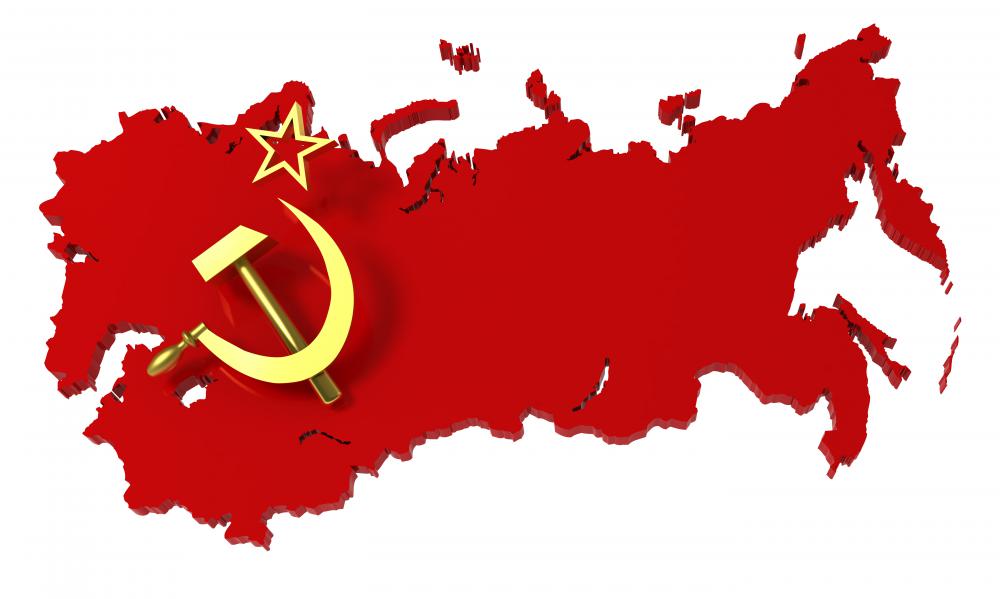At WiseGEEK, we're committed to delivering accurate, trustworthy information. Our expert-authored content is rigorously fact-checked and sourced from credible authorities. Discover how we uphold the highest standards in providing you with reliable knowledge.
What Should I Know About Belarus?
Belarus is a large country in Eastern Europe. It covers 80,150 square miles (207,600 sq. km), making it roughly half the size of California. The country shares borders with Latvia, Lithuania, Poland, Russia, and Ukraine.
The region was settled thousands of years ago, and passed through the hands of various civilizations and empires. Slavs eventually settled the area sometime in the 6th century, expanding out through the territory and integrating with existing groups in the region. The people of contemporary Belarus are mostly descendants of three different Slavic tribes, the Drehovians, the Kryvians, and the Radzimians.

In the 9th century, the Vikings began to trade extensively with the Byzantine Empire, and the region of Belarus became an important waypoint for that trade. The Vikings eventually assumed control of much of the land, building trading posts along the rivers, but otherwise leaving the local tribes a great deal of autonomy. Around the same time, a Slavic alliance, the Kievan Rus’, formed throughout much of the Slavic lands.

In the 9th century a distinct Belarusian state began to form, pushing itself as distinct from the Kievan Rus’. This emergence of a distinct identify continued over the next few centuries. In the 13th century the Kievan Rus’ began to fracture, as a result of invasions both from Crusaders, and later from the Mongol Blue Horde. The country was absorbed by Lithuania, although the Slavic majority of the region meant that the region was able to exert sizable control on the politics of Lithuania as a whole.
In the late-16th century Lithuania joined Poland to form the Polish-Lithuanian Commonwealth, and Belarus was again absorbed into a larger whole. The Belarusians nonetheless retained their sense of self, and a relatively-high level of self-governance. Beginning in the mid-17th century the country, as well as neighboring regions in the Polish-Lithuanian Commonwealth, began to experience a series of violent outbreaks and invasions. Ultimately, Russia was invited to assist in settling the region, and soon they had taken control of most of the eastern region, with Sweden ultimately taking control of the rest. Both powers were ultimately driven out, but the damage had been done, and the Commonwealth was devastated.
At the end of the 18th century Belarus was annexed by the Russian Empire, and it would remain under Imperial control until the Russian Revolution. Throughout the 19th century Belarusian culture was in many ways suppressed by the Russian Empire, but it nonetheless flourished and a strong sense of nationalism began to form. When the Germans took control of the region during World War I, the country experienced a new renaissance, with the energy that had been suppressed under the Russians exploding into being, resulting in a strong resurgence of traditional Belarusian language and culture.
In the aftermath of World War I, Belarus declared itself an independent republic. The republic was short lived, however, and within a few years it had become a Soviet Republic, joining with the USSR. It remained a part of the USSR, with a great deal of autonomy, until the breakup of the union began in 1991, when it declared independence.
Since Belarus declared independence the country has been somewhat marred by alleged election problems, as identified by international observers. The president who was elected in 1994 quickly removed many of the powers of Parliament, and has since been re-elected in each subsequent election, using each new term to push through more and more authoritarian reforms.
Belarusian cities are picturesque, and many people who visit spend a great deal of time in the urban centers of Minsk and Hrodna. Historical sites from World War II are also a great draw, with the Museum of the Great Patriotic War and the Brest Fortress being two of the most famous. Although the country's tourist infrastructure is not as developed as some of its Eastern European neighbors, accommodations and transport can be found for most price-ranges, although high-end amenities will likely be lacking everywhere except Minsk.
Planes arrive daily in Minsk from cities around the world, and a number of cheaper regional flights connect Belarus with the rest of Eastern Europe. Busses also connect the country to Poland and Lithuania, and trains come from Russia, Ukraine, and Latvia as well.
AS FEATURED ON:
AS FEATURED ON:












Discuss this Article
Post your comments